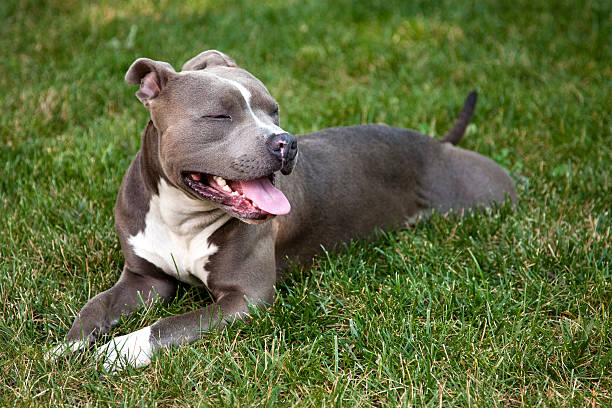Are you debating between the Pitbull Terrier and the Labrador Retriever as your future canine companion? Both breeds instantly recognisable and may recognised from a mile away. Pitbull Vs Labrador breeds are well-known for their industrious natures and family-friendly personalities.

However, there are several distinctions between these breeds that give rise to Labrador Vs Pitbull discussion. Yes, they both have a strong moral compass, but their personalities very different, and they best suited to different sorts of families. Labradors are a popular option among first-time dog owners, however Pitbulls may be obstinate and are best left in the hands of a knowledgeable owner. Before picking your canine friend for the next decade, it’s critical to learn about each breed.
This article will assist you in comparing puppy expenses across breeds, whether you are attempting to compare puppy costs between breeds or simply wondering how they compare. Both breeds’ advantages, history, and needs for maintaining them as pets will be discussed. Prepare to become a Labrador and Pitbull expert in no time!
Appearance
Pitbulls and Labradors have quite distinct appearances. Both types are immediately distinguishable and have distinct coats and physical characteristics. Even someone who isn’t familiar with dog breeds can recognise the difference between a Pitbull and a Labrador Retriever. Labrador Vs Pitbull face is also an important thing to discuss as they are very different.
The American Pitbull is a medium to big breed, with males often weighing 35 to 60 pounds and females typically weighing 30 to 50 pounds. Some males are larger than others, but they seldom exceed 80 pounds.
Labrador Retrievers are a medium to big dog breed that is generally heavier than Pitbulls. Males normally weigh 65 to 80 pounds, while females average 55 to 70 pounds.
In most situations, when we see from the Labrador Vs Pitbull face aspect, we come to know that both breeds have the same eye color. Labs and Pitbulls typically have golden brown hazel, dark brown, or brown eyes. Pitbulls, on the other hand, are more likely to have blue eyes. Blue eyes are distinctive and prized by dog lovers all around the world.
Temperament
Both breeds are amiable when properly taught in terms of temperament, or how they interact with people and other dogs.
Pitbulls, despite their notoriety, are generally the friendliest dogs you’ll ever meet. Pit bulls, when properly socialized, are quite sociable to other dogs. Pitbulls are devoted to their owners yet pleasant toward others, particularly youngsters. Pitbulls only display bad behavior when they are socialized wrongly or mistreated as puppies. Because of what they were developed for in the past, they can be significantly more protective than Labs.
Labrador retrievers are also highly trustworthy and friendly dogs who are usually up for a game and may be rather mischievous. They make excellent children’s friends and family members.
They’ve seldom met someone they didn’t like, making them a favorite of many families with youngsters. This also makes them poor guard dogs. While they may bark when outsiders approach, unless otherwise taught, they will nearly always soften up for a belly scratch, even from outsiders.
Exercise
Pitbulls and Labrador Retrievers are both high-energy dog breeds. They must play and workout for long periods of time. Labs, in particular, require a lot of room to maneuver about and explore. It is very useful to their fitness programme to have a body of water nearby.
Pit bulls like exercising their powerful jaw muscles, and a rope toy is a great method for them to do so.
If your Pitbull or Labrador has been properly socialized, dog parks are a terrific method to promote positive strength training. In the end, both of these breeds require continuous daily activity. Expect to exercise any breed for at least 60-90 minutes every day.
Health
Exercise is the greatest method to keep a Labrador or Pitbull healthy, as previously said. Make sure you have more than simply a daily walk around the block in your daily play regimen. Both breeds require physical exercise to keep their bodies and bones in good shape for as long as possible.
Both breeds, however, are susceptible to a variety of health problems. Pitbulls and Labradors, like most dog breeds, are more susceptible to ailments particular to their breed.
Pitbulls are prone to different skin diseases because of their short hair. Sunburns, itching allergies, benign tumors, and (rarely) skin cancer are more frequent in Pitbulls than in other breeds.
In addition, Pitbulls are prone to hip dysplasia and knee issues. While you should keep your Pit active, keep an eye out for limping or uneven walking patterns, which might suggest joint trouble.
Labradors have their own set of health issues. While both breeds are subject to skin problems, Labs are more likely to gain weight than Pitbulls. They are almost as well-known as the Pit for generating hip dysplasia and knee problems. Obesity, as well as a variety of other health conditions such as gastrointestinal difficulties, musculoskeletal troubles, and ligament tears, can all add to this.
Nutrition
It’s vital to feed your dog nutritional and healthy food if you want them to live a long and happy life. Labs and Pits consume equal amounts of carbohydrates, proteins, amino acids, lipids, fatty acids, vitamins, and minerals.
Pitbull Vs Labrador may eat a lot because they are medium to big dogs. Labs are somewhat more active than Pitbulls and require more calories per day, ranging from 1500 to 1875. Labs consume around 2 to 3 cups of food every day. Pitbulls require between 1000 and 1750 calories per day to maintain their energy and eat healthily. This means that, considerably in size and activity level, Pitbulls will consume 1.5 to 3 cups of food every day.
One of the most recent hot topics has been the dispute over commercial vs. handmade cuisine. While store-bought food is handy and contains nutritional information on the package, it is typically high in preservatives and fat. Homemade food necessitates extra consideration, since it typically necessitates calculating your dog’s macros and devising the ideal nutritional plan for their specific requirements.
Grooming
Grooming is an important aspect of caring for every dog breed. The coats of Labradors and Pitbulls differ greatly, with Pitbulls requiring significantly less maintenance than Labradors. Pitbulls shed less than double-coated Labrador retrievers.
However, this does not negate the fact that Pits require grooming. Maintaining the luster of your Pit requires a high-quality diet. You should also brush them lightly with a rubber curry brush once or twice every two weeks. If your Pitt’s coat is losing its gloss, you should do this every day until it looks better.
Labradors need more grooming than other dogs. Brushing Labs at least once a week is required due to their regular shedding. Brushing your dog twice a week is recommended if your dog sheds more than the average.
On the scale of dog breeds, both are quite easy to groom. Despite the fact that Labs shed more, their coat is still very short. Unless there is a more serious problem, you won’t notice any tangles or clumping.
Grooming is an excellent time to inspect your dog for skin bumps and fleas. If you see any, act swiftly to prevent it from spreading. Otherwise, you can end up paying a lot of money for vet treatment, and your dog would be totally unhappy, if not in agony.
Labrador Vs Pitbull: Who Would Win? (Wrap Up)
If you’re considering a Labrador Retriever and a Pitbull, maybe this article on Labrador Vs Pitbull has cleared up some of the misunderstanding. Both breeds are terrific alternatives for your future pet, and widespread myths about one or the other, particularly Pitbulls, should not stop you.A Labrador may be a better option for a first-time dog owner owing to its simplicity of training. However, if you have your heart set on Pitbull, don’t let it deter you. Whatever you choose, you can be assured that with the proper training, food, and exercise, your dog will quickly become a treasured family member. Your future canine friend is simply waiting to meet you, whether from a breeder or a shelter!







